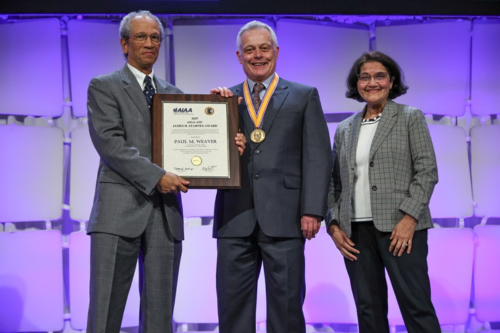Professor Paul Weaver, Professor of Lightweight Structures in the School of Civil, Aerospace and Design Engineering at the University of Bristol, won the James H. Starnes Jr. Award from the American Institute of Aeronautics and Astronautics (AIAA) and the American Society of Composites (ASC), which is only presented once every four years.
Professor Weaver was presented with the award at a special AIAA SciTech Meeting in Orlando in January.
Professor Weaver is an authority in the field of structural mechanics for composite materials, holding patents for morphing flap technology that is used for wind turbine and helicopter rotor blades, as well as in deployable lattice structures for satellites.
His expertise in lightweight structures has led to him being employed as a consultant for the NASA Langley Research Centre, the Ferrari Formula 1 team and the America’s Cup sailing team Artemis Racing.
He is renowned for his understanding of the interactions between mechanical properties and structural geometry, and his ability to adjust the design of materials to enhance performance through buckling and morphing. Such structures place a premium on being lightweight and efficient.
In a seminal paper for The Aeronautical Journal of the Royal Aeronautical Society, Professor Weaver defined the properties required for an aircraft skin material to facilitate morphing. The article has gone on to become the most cited paper in the journal’s history.
Professor Weaver’s contribution to the development of a new composite manufacturing technology called Continuous Tow Shearing has been commercialised by the University of Bristol spin-out iCOMAT.
Reacting to his award, Professor Weaver said: "I am thrilled to receive the James H. Starnes Jr. Award from the AIAA president, Daniel Hastings, and the ASC Vice-President, Rani Sullivan. I am honoured and humbled to be recognised by an award named after Jim Starnes, a great man who held highly influential positions in NASA and has left his 'professional fingerprints' over much of the worldwide composite structures landscape.”
Professor Weaver has graduated more than 50 PhD students, many of whom work in universities around the world, as well as the National Composites Centre and in high-profile companies in the aerospace industry. He has authored 275 refereed journal articles and attracted more than £40m of research funding including £3m from industry.
